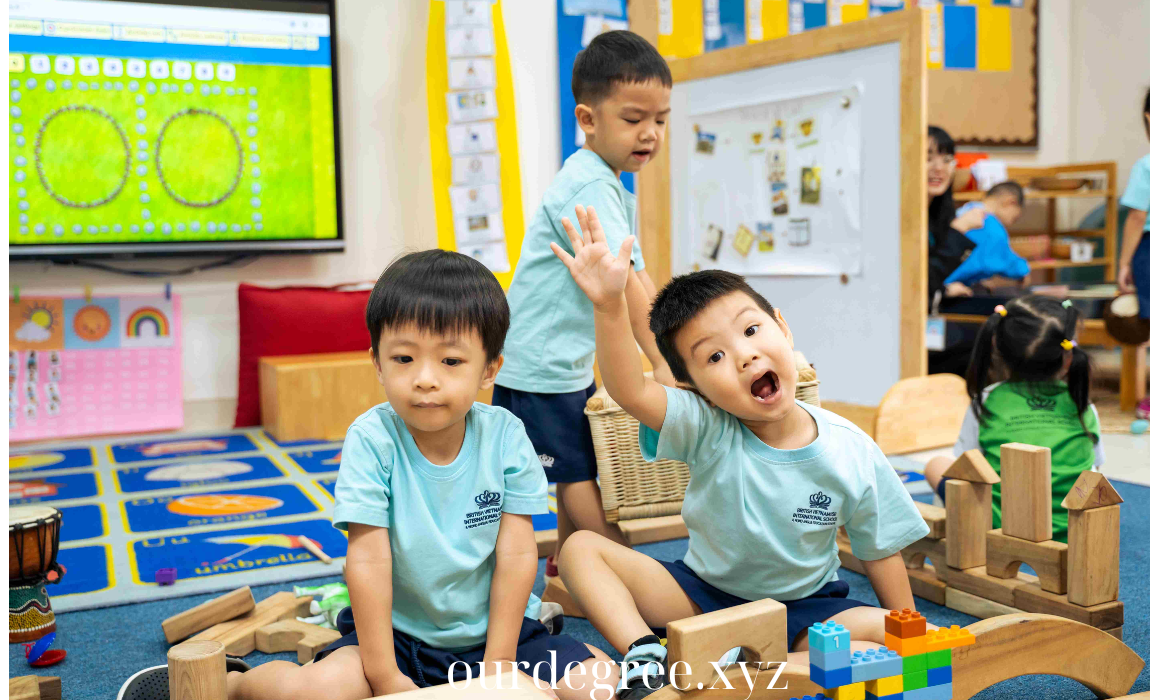
Providing exceptional early childhood education sets the foundation for lifelong learning, cognitive development, and emotional well-being. A high-end early years curriculum emphasizes not only academic learning but also social, emotional, and physical development in a nurturing environment. These curricula are designed to foster curiosity, creativity, and critical thinking, while also instilling essential life skills that children carry forward into their academic journey and beyond.
This guide explores the most effective high-end early years curricula that focus on holistic development and educational excellence, offering insights into the methodologies, benefits, and key components of these programs.
1. Reggio Emilia Approach: Child-Centered Exploration
The Reggio Emilia approach, founded in Italy after World War II, emphasizes child-led exploration and inquiry-based learning. It views children as competent, capable learners who construct their understanding of the world through experiences, social interactions, and hands-on projects.
Key Features:
- Emergent Curriculum: Lessons are based on the interests of the children, with teachers observing and facilitating learning through projects that evolve organically from the children’s curiosity.
- The Environment as the Third Teacher: The physical environment plays a central role in the Reggio Emilia approach. Classrooms are designed to be aesthetically pleasing and stimulating, with natural light, open spaces, and areas that encourage exploration.
- Collaborative Learning: Children are encouraged to work in small groups, developing their ability to communicate, negotiate, and cooperate with peers.
- Documentation of Learning: Teachers meticulously document children’s learning processes through photographs, written observations, and visual displays, creating a living portfolio that tracks the child’s development.
High-End Advantage:
The Reggio Emilia approach fosters critical thinking, creativity, and collaboration. Its focus on child-driven learning encourages independence and nurtures a deep sense of curiosity and intrinsic motivation in young learners.
2. Montessori Method: Independence and Self-Directed Learning
The Montessori method, developed by Dr. Maria Montessori, is one of the most renowned high-end early childhood education models. It emphasizes self-directed learning, allowing children to explore subjects at their own pace within a carefully prepared environment.
Key Features:
- Mixed-Age Classrooms: Montessori classrooms often group children of different ages together, typically within a 3-year span. Older children mentor younger ones, while younger children learn by observing their older peers.
- Hands-On, Self-Paced Learning: Children choose from a range of specially designed, hands-on materials that encourage them to engage deeply with subjects like math, language, and practical life skills.
- Teacher as a Guide: In the Montessori classroom, the teacher’s role is more of a facilitator or guide, allowing the child to lead their learning while providing subtle direction and support as needed.
- Emphasis on Practical Life Skills: Montessori programs focus on practical skills like dressing, cleaning, and preparing food, which build independence, responsibility, and confidence in young children.
High-End Advantage:
The Montessori method cultivates independence, problem-solving abilities, and a love of learning. Its focus on individualized, child-led learning ensures that each child progresses according to their unique abilities and interests, fostering a deep sense of autonomy and confidence.
3. International Baccalaureate (IB) Primary Years Programme (PYP): Inquiry-Based Global Learning
The International Baccalaureate (IB) Primary Years Programme (PYP) offers a high-end, inquiry-based curriculum for young learners aged 3 to 12. This globally recognized program emphasizes an international mindset, aiming to create well-rounded students who are aware of and engaged with global issues.
Key Features:
- Inquiry-Based Learning: The PYP encourages students to learn through inquiry, asking questions, exploring concepts, and making connections to the real world. It promotes critical thinking and problem-solving.
- Transdisciplinary Themes: Learning is organized around six transdisciplinary themes, such as “Who We Are” and “How the World Works,” which integrate subjects like science, social studies, math, and language.
- Global Perspectives: The PYP emphasizes intercultural understanding and respect, preparing children to become globally minded citizens who can contribute to a more peaceful world.
- Student Agency: Students are given the opportunity to make choices about their learning, fostering independence and self-motivation.
High-End Advantage:
The IB PYP provides a globally recognized framework that fosters academic excellence, critical thinking, and an understanding of diverse perspectives. It is particularly beneficial for families seeking an internationally focused curriculum that encourages cultural awareness and global citizenship from an early age.
4. Waldorf Education: Holistic Development and Creativity
Waldorf education, founded by Rudolf Steiner, emphasizes a holistic approach to early childhood education that integrates academics, creativity, and social-emotional learning. This curriculum is designed to nurture the whole child—mind, body, and spirit.
Key Features:
- Imagination and Play: Waldorf schools emphasize creative play, storytelling, and artistic expression. These activities are considered essential for cognitive, social, and emotional development.
- Delayed Academic Learning: Formal reading, writing, and math instruction are delayed until children are developmentally ready, typically around age 7. Instead, early childhood programs focus on play, movement, and hands-on activities.
- Rhythmic Structure: Waldorf classrooms follow a predictable daily and seasonal rhythm, which creates a secure, comforting environment for young learners.
- Teacher-Child Bonding: Children stay with the same teacher for several years, allowing for deep, trusting relationships to form, which is crucial for emotional development.
High-End Advantage:
The Waldorf education approach encourages creativity, imagination, and emotional intelligence. Its focus on delayed academics ensures that children develop a solid emotional and social foundation before diving into formal learning, making it ideal for those who prioritize holistic development.
5. HighScope Curriculum: Active Participatory Learning
The HighScope curriculum is rooted in active participatory learning, where children are encouraged to be active participants in their education by making choices, solving problems, and engaging in hands-on learning experiences. This approach is designed to help children build both cognitive and social skills in a structured yet flexible environment.
Key Features:
- Plan-Do-Review Process: Children are encouraged to plan what they want to do, carry out their plans, and then reflect on what they learned. This process helps children develop decision-making, problem-solving, and reflective thinking skills.
- Active Learning: HighScope emphasizes hands-on, experiential learning where children interact with people, objects, and ideas to construct their understanding of the world.
- Teacher-Child Interaction: Teachers play a supportive role, encouraging children to explore and helping them develop problem-solving skills through open-ended questions and guidance.
- Assessment Through Observation: Teachers assess children’s progress through daily observations and interactions, which are used to tailor instruction to meet each child’s needs.
High-End Advantage:
The HighScope curriculum provides a balanced approach to early childhood education, combining structure with flexibility. Its emphasis on active learning and reflective thinking helps children build critical cognitive skills while fostering independence and creativity.
6. Forest Schools: Nature-Based Learning
Forest schools offer a nature-based approach to early childhood education, where children spend most of their time learning and playing outdoors in natural environments. This immersive, hands-on approach helps children develop resilience, problem-solving abilities, and a deep connection to nature.
Key Features:
- Outdoor Learning: Forest schools take place primarily in outdoor settings such as forests, parks, or other natural environments, where children explore, discover, and learn through nature.
- Child-Led Exploration: Learning is child-led, with children given the freedom to explore their surroundings, experiment, and take risks. Teachers facilitate learning by guiding exploration and asking open-ended questions.
- Physical and Emotional Development: The outdoor environment encourages physical activity, helping children develop gross motor skills, coordination, and physical resilience. It also supports emotional well-being, as nature provides a calming, stress-reducing atmosphere.
- Environmental Stewardship: Forest schools foster a sense of environmental responsibility, teaching children to respect nature and understand the importance of sustainability and conservation.
High-End Advantage:
Forest schools provide a unique, nature-based curriculum that fosters independence, confidence, and resilience. The immersive outdoor environment promotes holistic development while instilling a love for the natural world, making it ideal for families who prioritize environmental education and outdoor play.
7. Bank Street Approach: Play-Based, Progressive Education
The Bank Street approach focuses on play-based learning, social interaction, and inquiry-based activities. It emphasizes a progressive education model that allows children to learn through play, collaboration, and exploration, with a strong focus on the whole child.
Key Features:
- Play-Based Learning: The Bank Street approach emphasizes the importance of play in early childhood education. Play is seen as a way for children to experiment, take risks, and make discoveries.
- Social Interaction: Children learn through collaboration and social interaction, building emotional intelligence and communication skills.
- Integrated Curriculum: The curriculum integrates subjects like art, science, language, and math into thematic units, helping children make connections across disciplines.
- Teacher as Facilitator: Teachers act as facilitators, guiding children’s inquiry and supporting their emotional and intellectual growth without directing learning too rigidly.
High-End Advantage:
The Bank Street approach nurtures the emotional and social aspects of development while encouraging intellectual growth through play and exploration. Its progressive education model supports children in becoming confident, well-rounded individuals.
Conclusion: Choosing the Right High-End Curriculum
Selecting a high-end early childhood curriculum involves understanding your child’s needs and developmental stage while also considering your educational philosophy. Whether you prioritize child-led learning (Reggio Emilia), independence and practical skills (Montessori), global awareness (IB PYP), or holistic development (Waldorf), these curricula offer exceptional pathways to fostering a love of learning and lifelong success. Each curriculum provides a unique set of advantages, ensuring that your child receives a well-rounded, enriching early education experience.



